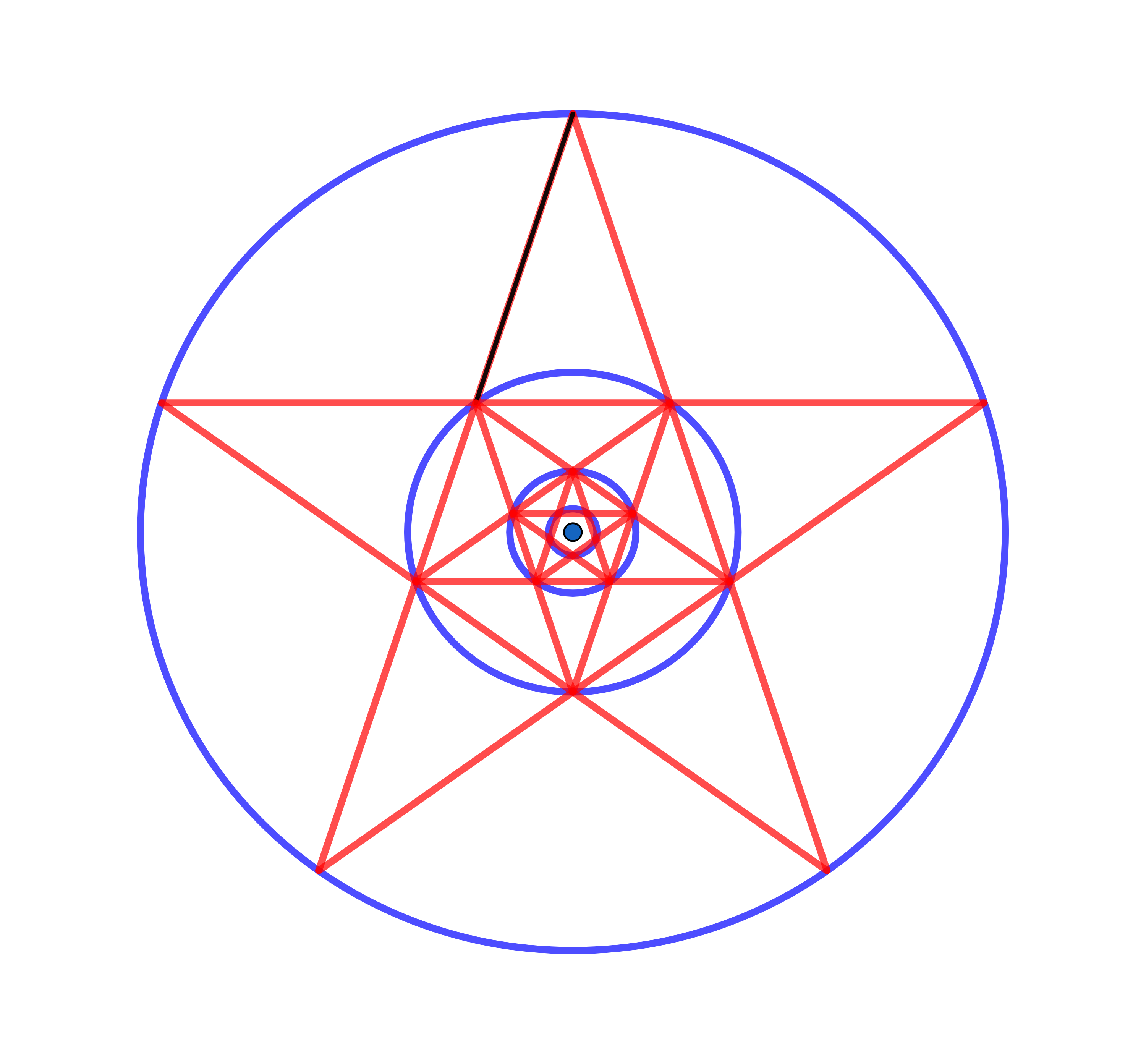Nested Pentagrams and Circles.

For each positive integer , let be the Pentagram inscribed in the circle and be the circle inscribed in the Pentagram .
Let be the radius of each circle .
If and , where and are coprime positive integers, find .
The answer is 8.
This section requires Javascript.
You are seeing this because something didn't load right. We suggest you, (a) try
refreshing the page, (b) enabling javascript if it is disabled on your browser and,
finally, (c)
loading the
non-javascript version of this page
. We're sorry about the hassle.
m ∠ A O P = 5 π and by Inscribed Angle Theorem m ∠ E P F = 2 1 m ∠ E O F ⟹ m ∠ A P O = 1 0 π
O C A C = tan ( 5 π ) ⟹ O C = tan ( 5 π ) A C and P C = tan ( 1 0 π ) A C = r 1 − O C = r 1 − tan ( 5 π ) A C ⟹
h = A C = tan ( 5 π ) + tan ( 1 0 π ) tan ( 1 0 π ) tan ( 5 π ) r 1
tan ( 5 π ) = tan ( 1 0 2 π ) = 1 − tan 2 ( 1 0 π ) 2 tan ( 1 0 π ) ⟹ h = 3 − tan 2 ( 1 0 π ) 2 tan ( 1 0 π ) r 1
Let β = 3 − tan 2 ( 1 0 π ) tan ( 1 0 π ) ⟹ h 1 = 2 β r 1 = r 2 sin ( 5 π ) ⟹ r 2 = sin ( 5 π ) 2 β r 1
In General r n = ( sin ( 5 π ) 2 β ) n − 1 r 1 and R = n = 1 ∑ ∞ r n = sin ( 5 π ) − 2 β sin ( 5 π ) r 1 .
Let u = tan ( 2 x ) ⟹ u 2 = 1 + cos ( x ) 1 − cos ( x ) = ( 1 + cos ( x ) ) 2 sin 2 ( x ) ⟹ u = 1 + cos ( x ) sin ( x ) and u 2 = 1 + cos ( x ) 1 − cos ( x ) ⟹ cos ( x ) = 1 + u 2 1 − u 2 ⟹ sin ( x ) = 1 + u 2 2 u and u = tan ( 2 x )
Let x = 5 π ⟹ u = tan ( 1 0 π ) ⟹ β = 3 − u 2 u and sin ( 5 π ) = 1 + u 2 2 u
⟹ R = 2 ( 1 − u 2 ) 3 − u 2 r 1 and u = tan ( 1 0 π ) = 5 1 2 5 − 1 0 5 ⟹ R = ( 2 1 ) ( 5 5 + 5 ) r 1 = ( 2 1 + 5 ) r 1 ⟹ r 1 R = 2 1 + 5 = c a + b ⟹ a + b + c = 8